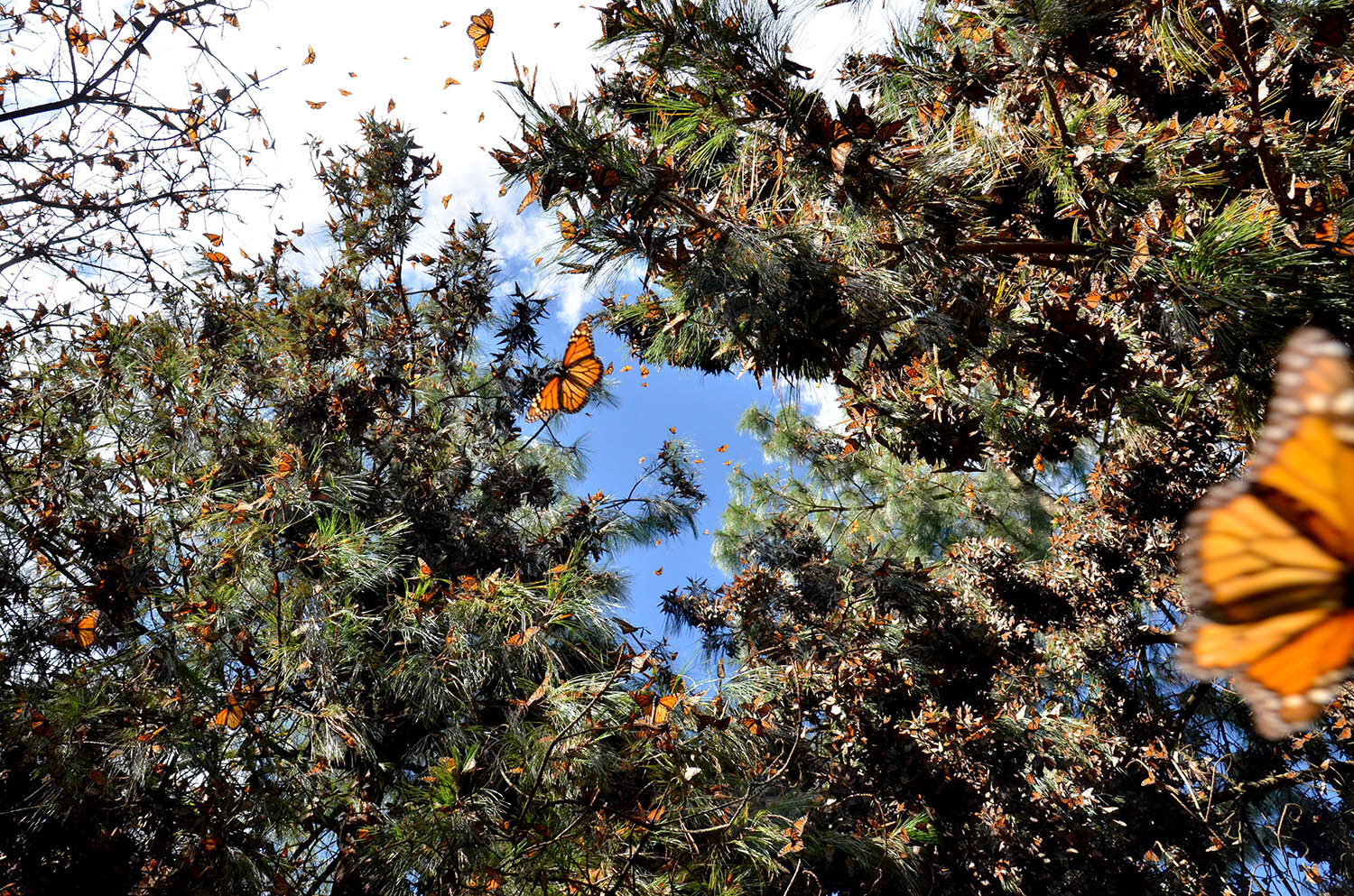
‘The sun is now higher and stronger; when it emerges from behind clouds the intense heat warms the roosting creatures. They emerge from their semi-dormancy in search of water. And the sky explodes – the red golden blaze of their wings backlit like stained glass, cascading from different directions in a chaotic synchronicity.’
In December 2016 I travelled to Mexico to research and study the Monarch Butterfly at its overwintering habitat in the mountain Oyamel fir forests in the state of Michoacán.
The Monarch butterfly has a phenomenal migratory pattern, every year travelling thousands of miles from Canada and California to the high altitude forests that offer a specific micro-climate.
The Oyamel ecosystem is one of Mexico’s most endangered, the primary forests are ancient relics from a time when the earth was cooler and wetter. As the earth warmed, the forest retreated up the mountainsides to retain the cool, moist climate to which the trees adapted. Only 2% of the original forest remain. The Monarch butterfly and its migratory pattern is as ancient as the forest. In our millennia both are threatened and the future of the migration is tenuously balanced.
The overwintering sites are protected and collectively form the Monarch Butterfly Biosphere Reserve, some of these are open to the public – one of the more remote sanctuaries, the inactive volcano Cerro Pelon is where the annual migration was first confirmed (1975). Despite being protected, over the last 20 years habitat loss along the entire monarch butterfly migratory route has decreased in size by 90%.
Low population numbers mean that one winter storm could effectively extinguish the monarchs’ migratory roosts in Mexico completely.
Forest protection on the Monarch Butterfly Biosphere Reserve is more crucial than ever as Logging causes not only habitat loss but a change in the specific temperature and atmosphere that the Monarch needs to survive.
Sadly there are a myriad of other factors threatening the future of the Monarch migration. One of the biggest are the genetically modified corn and soy plantations in the United States. Pesticides used on these crops kill every form of life - above and below the soil - that is not resistant to the chemical, including milk weed which is the Monarchs’ sole source of food. These modified corn crops now account for 40% of all corn produced in the US.
To find out more and about how to help conservation efforts to protect the Monarch and Its migration, visit The Butterflies & Their People, A.C. A locally-run Asociación Civil (non-profit organization) registered and located in the village of Macheros in the State of México at the Cerro Pelon reserve.
butterfliesandtheirpeople.org
‘Ascending steeply through verdant forest, the thick scent of horse and pine fills crisp morning air as the sun rapidly warms it. Lungs expanding, climbing higher towards 3000 metres the butterflies begin to appear. Not many at first, a few, fluttering and wafting past. Then more begin to criss-cross the sky, I have never seen so many butterflies of the same species. Higher still. At the summit of Cerro Pelon as I approach the tall trees where the colony is, the atmosphere changes. Holding my breath I tread carefully as if entering a sacred and ancient tomb. Thousands and thousands of delicate bodies cluster together, nestled in the pine needles, appearing to be leaves from a new species of tree. Tiny hanging statues. Looking down, the soft moss floor is a carpet of bodies, like fallen autumn leaves, a forest catacomb.’












